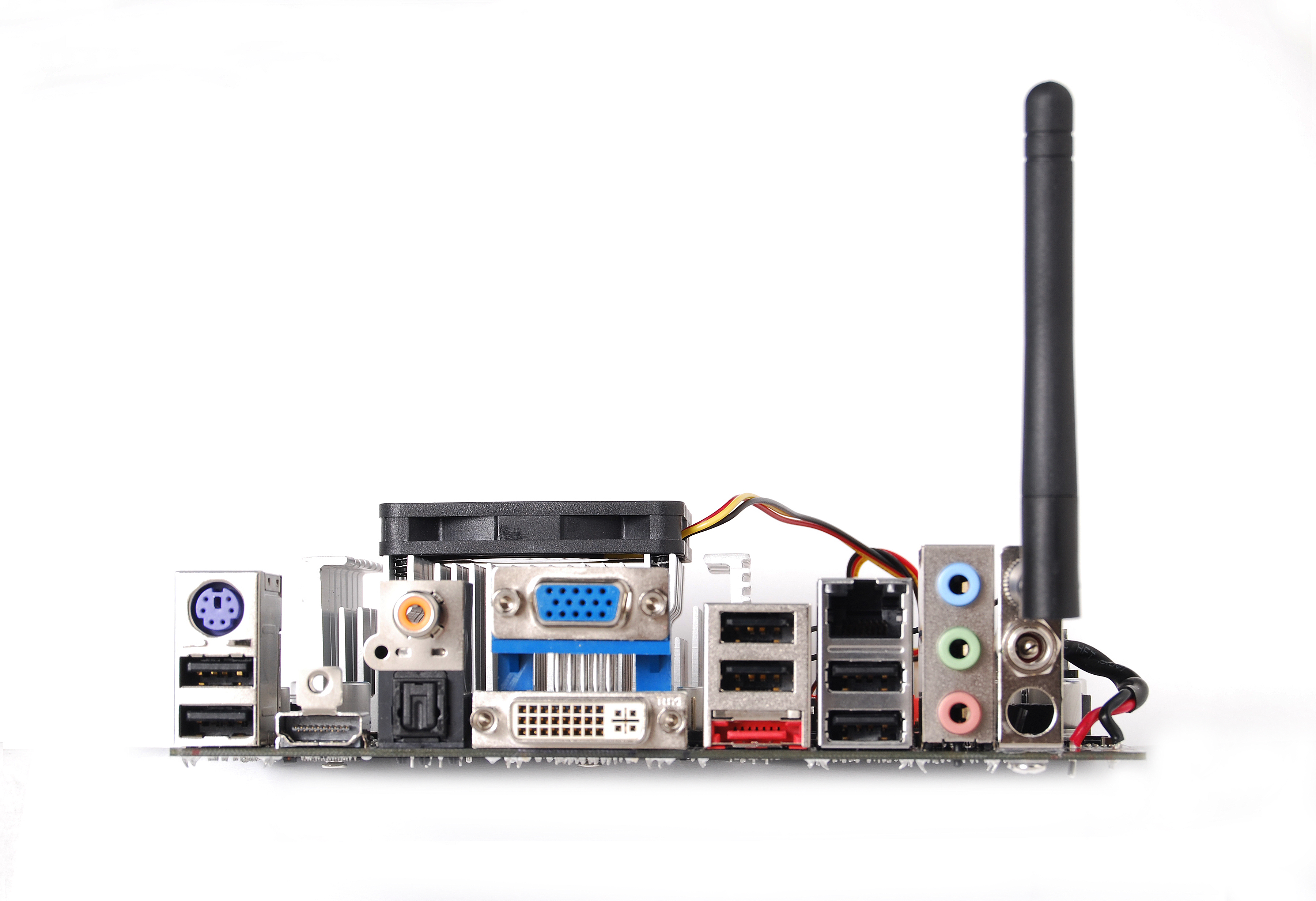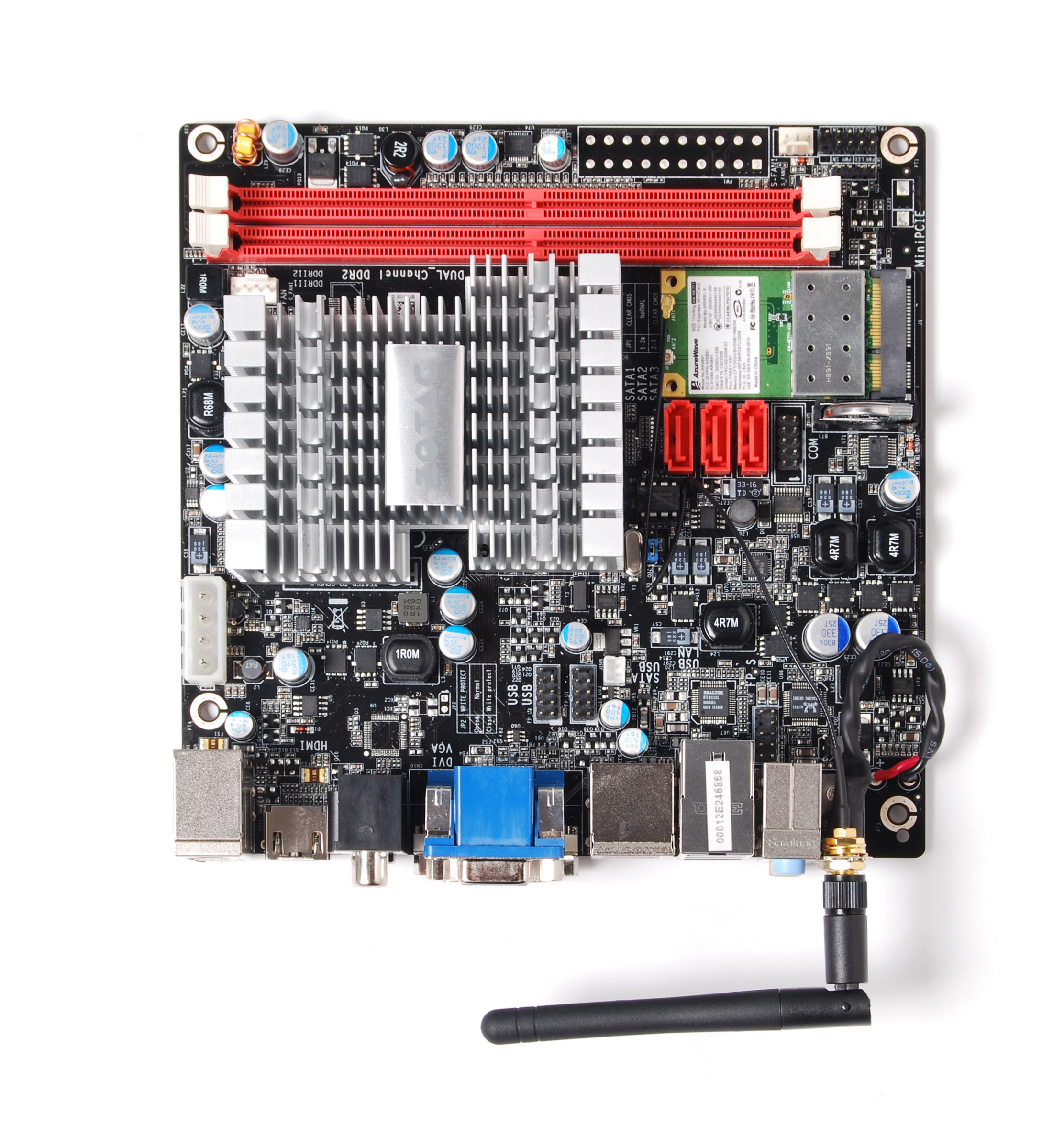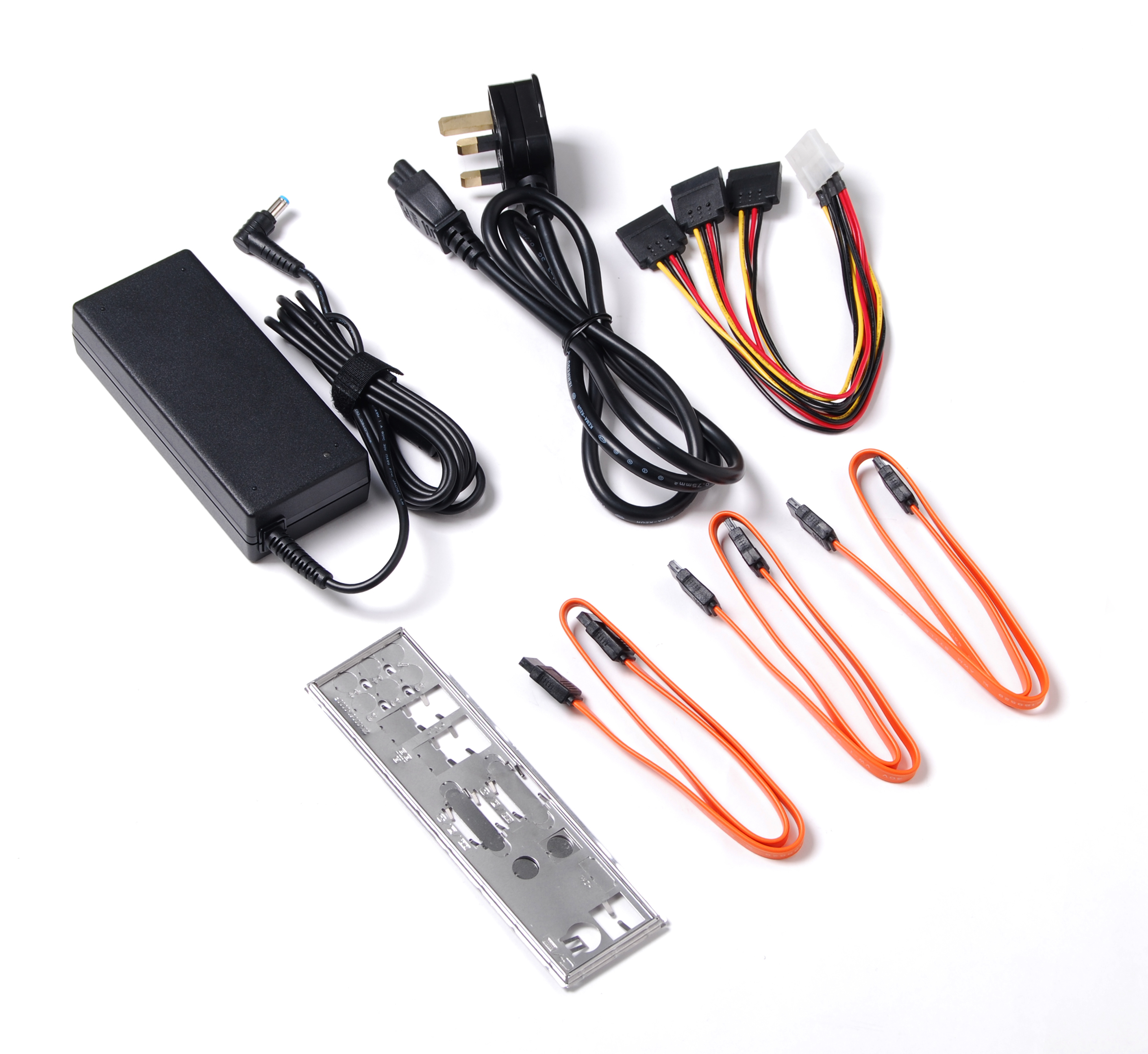Zotac's Ion Board On Windows 7: Nvidia Re-Arms Intel’s Atom
Zotac’s Ion-Series Motherboard: Added Value
The board’s most endearing quality is, arguably, its size. Conforming to the mini-ITX specification means dimensions of 17 cm by 17 cm. Right off the bat, we’re thinking of this platform as a potential HTPC contender.
Naturally, a mini-ITX form factor also means limited PCB real estate for enabling features that the chipset natively supports, too. But Zotac doesn’t seem to have a problem there. Most of the board’s space is consumed by a large passive heatsink, which covers the dual-core Atom processor and IGP core logic. There’s a fan included in the retail package; however, installing it is optional. We went ahead and used the fan, since it really didn’t generate much noise.
Two 240-pin DDR2 memory slots accommodate up to 4 GB (2 x 2 GB) of RAM running at up to 800 MHz. They’re arranged in a dual-channel configuration (2 x 64-bit), so you’ll want to be sure and populate them at the same time.
There isn’t enough room for expansion via full-sized PCI or PCI Express slots, but Zotac does enable a mini-PCIe slot populated by an 802.11b/g/n wireless adapter. This’ll undoubtedly serve as a huge boon for folks who want to put diminutive Ion boxes in the kitchen, living room, or den—spots likely to be lacking Gigabit Ethernet jacks nearby.
The Ion board’s I/O panel is loaded with ports and plugs normally found on full-sized ATX platforms. Six USB 2.0 ports accommodate plenty of peripherals (there’s a PS/2 keyboard port too, just in case). You also get optical/coaxial digital audio output, along with analog line in/line out/mix in 1/8” jacks. Display outputs include standard VGA, dual-link DVI (our 30” test platform originally only ran at 1280x800, unless we had it connected to an HDTV; Nvidia subsequently sent us a BIOS to enable all of the board's available resolutions, right up to 2560x1600), and HDMI 1.3. Gigabit Ethernet and eSATA round out the feature list around back. The last connector you see is a power jack—the board (and all attached storage) is powered by a 90W power brick.
Zotac’s minimalist bundle includes a custom I/O panel, one SATA cable, the aforementioned fan, an instruction manual, and an adapter able to turn one four-pin Molex connector into three SATA power plugs.
More Than A Motherboard
Get Tom's Hardware's best news and in-depth reviews, straight to your inbox.
Zotac’s retail price for this Ion-based board is $189—an almost insane price tag for a motherboard alone. But you don’t get just the motherboard. There’s also an Atom processor soldered on and the power brick, which keeps you from having to buy a separate power supply. All told, the combination is supposed to enable high-performance sub-$400 PCs.
Back when we first looked at Intel’s Atom processor in Shuttle’s X27 (and found it a cumbersome configuration), it was a single-core CPU running at 1.6 GHz. Granted, Hyper-Threading gave that Atom 230 CPU the ability to execute two threads in parallel, but it was still painfully slow.
The Atom 330 is yet another model from the Diamondville family, running at the exact same clock speed and sporting the same 533 MHz front side bus. The only difference is a doubling of on-package die, resulting in a dual-core CPU with Hyper-Threading able to address four threads at once. It uses the same .9-1.1625V range, and thus consumes exactly twice as much power: 8W instead of 4.
Those low-ball power figures are what lets Zotac bundle its 90W external power brick. We’ll get into the actual power figures shortly, but suffice to say, energy efficiency is going to be one of this board’s greatest selling points versus true desktop architectures re-purposed for this nettop space.
Current page: Zotac’s Ion-Series Motherboard: Added Value
Prev Page Introduction Next Page Ion As A Desktop PC (Nettop)-
SpadeM ReplyGranted, we could have done significantly better in the power department had we been a little choosier with our CPU. The Athlon X2 7850 was attractive due to its $69 price tag, 2.8 GHz clock speed, and unlocked multiplier, but its Kuma core is still rated at 95 W. You can dip down to the $60 Athlon X2 5050e (running at 2.8 GHz as well) and cut your maximum TDP down to 45W for $10 less.
If you knew you could have done better with a 45W not a 95W processor .. what gives? The supplier didn't have it in stock or why go for the obvious power monster?
On a different note, I'm looking forward to the transcoding article. -
one-shot Everyone down-rates the first post which is posted by the author of the article. I'm not sure if anyone has noticed that yet because I see every author's first post down-rated many times.Reply -
sublifer ReplyHere’s the short of it. When it comes to running multiple apps at the same time, compressing/decompressing large archives, and yes, even trasncoding
Just wanted to help: transcoding -
hellwig I almost wish you hadn't even tried playing games on it, but I suppose you needed some sort of comparison for the performance of the ION chipset.Reply
How many people will use this as a satellite PC in their homes, and what ever happened to Windows Home Server? I would think you let your central PC/server handle the computing and just use this guy as a remote terminal to stream media to. -
I'm looking for a low power system like this... my old father leaves his p4 system on ALL the time, and wonder why his electric bill is so high :-\Reply
-
siliconchampion I love that they mentioned the GeForce 9300-ITX WiFi board at the end of the review. I used that board with an e7400, 4GB corsair, a low profile 9800 GT, a 320GB 7200RPM 2.5 inch drive, and an Antec 380 watt PSU. The reason I love it so much is three-fold.Reply
First, I put all of the above mentioned components and put them into the case from the original Xbox (while maintaning totally stock appearances except for the back.
Second, the board boots lightning fast, and is a pleasure to work with.
Third, before we put the 9800GT into the build, using the same 9300 chipset as the Ion platform, we were running HL2 on max settings at 1680x1050 resolution (except with only 2x AA) and getting 35-45 FPS. We also played Halo 2 on medium settings and that played very well also. Obviously, after the 9800 was added, the computer flies. That just goes to show you that the Atom really is what is holding back the capabilities of the 9300 chipset.
All of this was accomplished with about $500, so it is a good budget computer that is inside of an Xbox. My i7 system has nothing on the "coolness" factor of this computer.
-
cangelini teeth_03I thought the ION platform used the Geforce 9400 and not the 9300?Reply
The difference between 9300 and 9400 is clock speed. This one is slower than the 9300, even.



